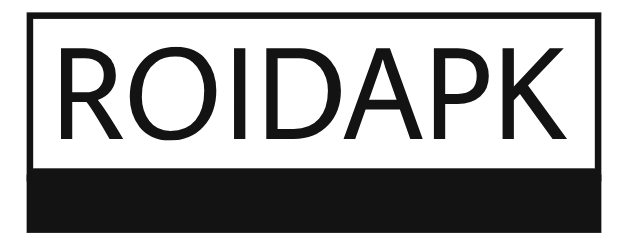Introduction
As artificial intelligence (AI) transitions from experimental phases into mainstream business operations, one challenge that product teams consistently face is escalating costs. Building, deploying, and maintaining AI systems involves a complex interplay of data management, computational resources, and specialized human capital — all of which can become expensive rapidly. For product teams already scaling AI, cost optimization is no longer a luxury — it’s a necessity.
In this comprehensive guide, we’ll explore the critical reasons behind rising AI costs, the unique challenges faced by AI product teams, strategic cost-optimization frameworks, tools to streamline budgets, and best practices used by top-performing organizations in 2025.

1. Why AI Cost Optimization Matters in 2025
AI development today is more complex than ever, involving various stages such as data preprocessing, model training, evaluation, deployment, monitoring, and retraining. These stages demand:
- High computational power for training large models, especially with deep learning and generative models.
- Scalable storage infrastructure to handle large datasets and models.
- Cross-functional collaboration between data scientists, ML engineers, product managers, and DevOps teams.
- Licensing and API costs from third-party data providers or AI services.
- Compliance and ethical frameworks, especially under strict regulations like GDPR, HIPAA, or AI Act.
Uncontrolled growth in any of these areas leads to budget overruns, delayed launches, or failed initiatives. Hence, cost optimization ensures financial sustainability and smoother product scaling.
2. Real Challenges Faced by AI Product Teams
Let’s break down the key cost drivers AI product teams face while scaling:
a. Over-provisioned Compute Resources
Teams often rent high-end GPU clusters without precise estimates of usage, leading to underutilization and inflated bills.
b. Inefficient Model Training Pipelines
Without pipeline optimization (e.g., batching, caching, early stopping), training consumes excessive compute time and cloud credits.
c. Data Duplication and Versioning Errors
Managing different dataset versions without a structured system can lead to redundant storage and reprocessing costs.
d. Maintenance and Retraining
Frequent retraining to combat model drift adds to long-term expenses, especially if triggers for retraining aren’t well-defined.
e. Complex AI Infrastructure
Building monolithic models with no modularity increases tech debt and maintenance overhead.
f. Lack of Budget Monitoring Tools
Not integrating cost monitoring tools with ML pipelines makes it difficult to forecast or control spending effectively.
3. Strategic AI Cost Optimization Frameworks
Cost optimization must be built into the lifecycle of AI development. Here’s how:
a. Lean AI Development
- Focus on building a Minimum Viable Model (MVM) rather than complex architectures from the start.
- Use performance vs. cost trade-off analysis to prioritize low-compute algorithms early on.
b. AI Lifecycle Cost Mapping
- Identify and track costs at every phase: data acquisition, preprocessing, model training, tuning, deployment, and monitoring.
- Use cost heatmaps and dashboards to visualize cost centers across stages.
c. Automation via MLOps
- Integrate Continuous Integration/Continuous Deployment (CI/CD) with ML pipelines.
- Automate retraining triggers using performance monitoring and drift detection.
- Use version control tools (like DVC, MLflow) to avoid redundant runs.
d. Modular Model Architecture
- Design components (feature extraction, preprocessing, inference) as standalone microservices.
- Enables reuse, quicker debugging, and lower long-term maintenance costs.
4. AI Scaling vs. AI Budgeting: Finding the Right Balance
While scaling, product teams are often tempted to deploy larger models, process more data, or roll out AI features to more users. However, uncalculated scaling leads to waste. Smart scaling strategies include:
- Choosing the Right Hardware: Opt for CPUs for lightweight tasks; use TPUs or specialized GPUs only when necessary.
- Transfer Learning: Reuse pre-trained models and fine-tune them for your specific use case.
- Model Compression: Use techniques like pruning, quantization, or distillation to reduce model size and improve efficiency.
- Dynamic Inference: Utilize mixed-precision inference and batch processing to optimize runtime cost.
- Elastic Deployment: Leverage serverless AI or autoscaling containers to reduce idle compute cost.
See a full breakdown of scalable strategies: 8 AI Cost Optimization Strategies
5. Tools and Platforms for AI Cost Optimization
Modern tools can help teams monitor and manage cost efficiency. Some of the top ones include:
a. AWS Cost Explorer & Budgets
- Set alerts and visual reports based on actual vs. forecasted usage.
b. Azure Cost Management + Billing
- Provides AI workload-specific insights and recommendations.
c. Google Cloud Vertex AI & Billing
- Integrates billing with Vertex AI workflows for granular spend analysis.
d. MLflow & Kubeflow
- End-to-end ML lifecycle management with experiment tracking and resource reporting.
e. Weights & Biases
- Adds cost metadata to experiment logs, allowing teams to correlate performance with compute usage.
f. Databricks Optimizations
- Auto-termination policies, spot instance usage, and cluster monitoring.
6. Best Practices from High-Growth Product Teams
Here are proven tactics used by scale-stage product teams to optimize AI costs:
- Design with Constraints: Start every experiment with a cost cap and time-boxed training.
- Automate Monitoring: Use real-time monitoring for drift, latency, and cost thresholds.
- Edge Inference: Deploy lightweight models at the edge to save on centralized compute.
- Async Training: Offload large batch training to low-traffic hours for cost-effective compute.
- Shared Pipelines: Standardize pipelines across teams to avoid duplicated infrastructure.
- Retrain When Needed: Don’t retrain periodically. Use metrics to detect performance dips first.
7. Key Takeaways for CTOs and AI Product Leaders
Cost optimization is a product-level concern, not just a technical one. Leadership should:
- Set KPIs for AI projects that include cost metrics alongside model performance.
- Invest in observability tools to track cost vs. performance in real time.
- Foster cost awareness among developers and data scientists.
- Encourage lean experimentation — not every use case needs a massive model.
By embedding cost awareness into every aspect of AI development and scaling, organizations can improve ROI, reduce waste, and ship faster.
Final Thoughts
AI cost optimization isn’t a one-time initiative — it’s an ongoing discipline. As 2025 continues to push the boundaries of what AI can achieve, teams that fail to prioritize budget control risk being left behind. By applying structured frameworks, using the right tools, and maintaining a cost-first mindset, companies can ensure their AI projects remain viable, efficient, and scalable.

